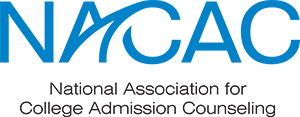Both IB and AP are considered the most rigorous level of courses that high school students can take. They are popular because they have standardized course content and because students can earn college credits. Families often ask us how taking these courses weigh in the college admissions process and what’s best for enrollment. Here’s some basic program information, along with advice about what to take.
What is AP?
The Advanced Placement (AP) program was created in the US in the 1950’s by the College Board (aka the SAT people) as a way for high school students to make an easier transition to college-level courses and to earn college credits. Like college courses, AP classes are structured around content given in a fast-paced environment. Over the years, they have become a popular way for high school students who wish to study further in the US to show rigor, mastery, and interest in particular subject areas. The AP scholar title is given to students who have taken multiple AP exams with high scores but was not meant to imply a coherent curriculum. Classes are usually chosen by students with teacher recommendations and PSAT scores are sometimes used as a pre-requisite.
Approximately 38 different subject areas are offered. Students can take as many or as few classes offered at their school. Students can also choose to take AP exams in May of any year without taking a class ahead of time. Exams mostly consist of multiple-choice questions, short answers, and short essays. They are scored on a 1 to 5 scale with 3 being seen as a passing “C” type of grade and a 4-5 showing mastery of the material. Exams cost $94 each and are scored by teachers and administrators chosen by the College Board. Financial aid is available for qualifying students.
AP classes are also available online at:
Students who take online AP courses must find a nearby high school to administer the tests so they can sit for the exams they need to get potential college credits.
Some US colleges will offer credit for high scores on AP exams, usually a 4 or 5, while others let students place out of introductory level courses on campus. Students with many AP courses and high exam scores might be eligible to graduate college early to save on tuition costs.
What is IB?
The International Baccalaureate Diploma Program (IBDP) program was designed in Switzerland in the 1960s. It is often referred to as IB in the US and DP in other countries. It is governed by the International Baccalaureate Organization (IBO) which is known for its strict standards. Intellectual curiosity and depth are seen as the main values of this program, as well as an awareness of global issues. Students typically take classes in the last two years of high school.
Each school determines if the IB program will be offered as a certificate or as a full-blown diploma. The certificate program allows students to pick and choose what classes within the program they want to study. The diploma has more set requirements and is therefore seen as more rigorous. (More on this below.)
Students aiming for the diploma must fulfill three core elements:
- Theory of Knowledge (TOK) which includes reflection and an emphasis on the interdisciplinary nature of knowledge
- Extended Essay (EE) which includes a 4,000-word research essay
- Creativity, Activity, and Service (CAS) which requires time outside of classes to fulfill
IB classes are offered in six broad subject areas:
Most classes are offered at one of two levels: Standard Level (SL) or Higher Level (HL). Students work with teachers at their school to select courses that provide an interdisciplinary course of study which shows both breadth and depth.
Students doing the diploma program are expected to take classes in at least three subject areas and must have three classes at the Standard Level and three classes at the Higher Level. There is an initial registration fee of $172 and after each class, students pay $119 per exam, with financial aid available to those in need. Assessments happen both internally at the school and externally with score ranges from 1 to 7 for each exam. ToK and EE are also evaluated out of a combined 3 additional points for a total of 45 as a possible perfect score. Students working towards the full diploma must earn at least 24 combined points and at least 4 in each subject. Many international students doing this full IB diploma graduate high school before the exam grades are issued. In these cases, colleges use their “predicted scores” given by teachers in their admissions evaluations.
The IBDP offerings are determined by each school and because of the resources associated, few schools in the world offer the program. Many colleges and universities around the world acknowledge the strength and rigor of the IB program, especially the diploma. US colleges and universities who give college credits for IB exams usually give credit for HL exams with scores of 5-7. Schools outside the US, especially in Europe, also give college credits for some IBs.
Should I take AP or IB? Which one is better?
To determine the best option, think through the following:
- First, what does your high school offer and does it make sense for you to switch schools for a different offering? We generally recommend you stay at the high school closest and most convenient to you but we acknowledge a student’s desire to find a challenging course of study or a school with more resources.
- Since the IB program requires additional time and commitment outside of class, you should take that into account as you plan how you want to best use your time.
- Finally, what do you want to accomplish? Are you looking for a comprehensive program like the IB or do you want to pick and choose your classes individually which is easier to do with the AP program?
- It’s also important to note that IB may be more expensive than AP, unless you take many APs over the course of your high school career in which case costs can add up quickly.
Do colleges prefer AP or IB? If my school doesn’t offer AP or IB, can I take the exams to further my application?
First, some general context. Colleges compare the general offerings of a student’s high school with the courses the student has elected to take to understand the context and rigor of that student’s studies. Applicants are never penalized for not taking classes that aren’t offered at their schools, so don’t worry that you’d be at a disadvantage if either AP or IB (or both) courses aren’t available to you. Colleges would like to see students who challenge themselves in subjects they find interesting and do their best in all the classes they take.
And colleges in the US have no preference between AP and IB. In terms of admission, colleges like to see honors, AP, IB, and dual enrollment classes taken because they show rigor, but they don’t always take exam scores into consideration at decision time. Exam scores may come into play after a student accepts an offer and before they enroll. Colleges may ask to see official exam scores for students who want to use those scores to earn college level credits or place out of intro-level courses. All of this is to say that taking the class is usually more important than the exam for admissions purposes.
So as always, think about what’s best for you as a student instead of thinking about what others think. The best choices always come when you understand your needs and choose the most appropriate classes for your personal success.
About Us: With more than twenty years of experience, Collegewise counselors and tutors are at the forefront of the ever-evolving admissions landscape. Our work has always centered on you: the student. And just like we’ve always done, we look for ways for you to be your best self - whether it’s in the classroom, in your applications or in the right-fit college environment. Our range of tools include counseling, test prep, academic tutoring, and essay management, all with the support of our proprietary platform, leading to a 4x higher than average admissions rates.





